-

Win a Free Custom Engraved Brass Coin!!!
As a way to introduce our brass coins to the community, we will raffle off a free coin during the month of August. Follow link ABOVE for instructions for entering.
You are using an out of date browser. It may not display this or other websites correctly.
You should upgrade or use an alternative browser.
You should upgrade or use an alternative browser.
A Dutch Fluyt in shell first, reconstructing the "Ghost ship" scale 1:36
- Thread starter Maarten
- Start date
- Watchers 74
-
- Tags
- dutch fluit
- Joined
- Sep 3, 2021
- Messages
- 5,139
- Points
- 738

And it also explains to an extent why ships of that era look somewhat organic below decks.Ow that really takes advanced planning !
- Joined
- Jan 9, 2020
- Messages
- 10,534
- Points
- 938

Okiedokie - so now I finally get the chance to catch up on what will be - without doubt - my most anticipated build on SOS! Obviously, I love the research that you are putting into this, Maarten - that is the only way to do it. I would have sacrificed a lot to have all the tangible information that you have on your build. Coupled to your exquisite craftsmanship, this will be a Fluyt to remember.
- Joined
- Oct 15, 2017
- Messages
- 1,189
- Points
- 443

Maarten, I find your "Fluyt" voyage so very interesting. A Dutch naval architecture history lesson.
Looking at some of the photos you've provided, the repaired hull looks similar to my first ship's hull. Also, post repairs, I think if I were the Captain of that ship I would make sure my cabin was above the water line!
Looking at some of the photos you've provided, the repaired hull looks similar to my first ship's hull. Also, post repairs, I think if I were the Captain of that ship I would make sure my cabin was above the water line!

- Joined
- Sep 3, 2021
- Messages
- 5,139
- Points
- 738

Anything below the waterline of any ship counts as a submarine; per my definition no-go compartmentsI think if I were the Captain of that ship I would make sure my cabin was above the water line!
Thx gents for your comments.
This weekend I will start on the Fluyt and put my Royal Caroline on the side for the time being until September.
For the show in Amsterdam in September I have mentioned I would bring a started shell first build of a Fluyt so it is time to make some dust.
She will be build from pear of tree trunks I bought from a orchard in Hoorn, the city where the first fluyt ever was build.
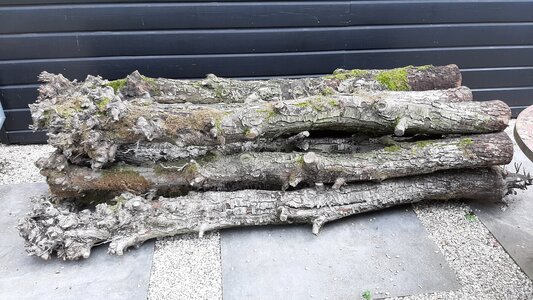
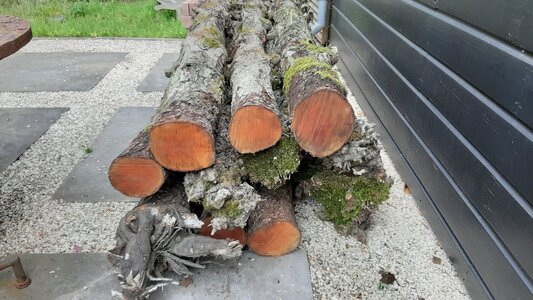
First chopped the trunks to 60 cm pieces.
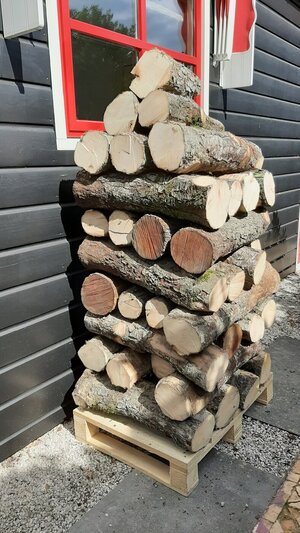
All trunks I have sawn quarterly into billets and stacked cross wise to dry properly.
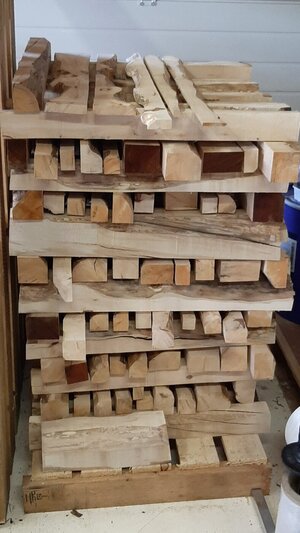
The billets dried now for three years on a pallet under my workshop desk.
Hope in the coming week I can start on the keel, stem and stern and then can join Stephan in the shell first planking.
It will be fun, no drawings purely build in proportions with guidence of the wreck findings and all of you ofcourse.
This weekend I will start on the Fluyt and put my Royal Caroline on the side for the time being until September.
For the show in Amsterdam in September I have mentioned I would bring a started shell first build of a Fluyt so it is time to make some dust.
She will be build from pear of tree trunks I bought from a orchard in Hoorn, the city where the first fluyt ever was build.


First chopped the trunks to 60 cm pieces.

All trunks I have sawn quarterly into billets and stacked cross wise to dry properly.

The billets dried now for three years on a pallet under my workshop desk.
Hope in the coming week I can start on the keel, stem and stern and then can join Stephan in the shell first planking.
It will be fun, no drawings purely build in proportions with guidence of the wreck findings and all of you ofcourse.
Looking anxious forward to your shell first building process. Pear wood enough to perform some re-do work if needed.
Looking forward to seeing your work here Maarten! Always fun to begin a new project!
Love the wood.
I will certainly be watching in awe on this one Maarten.
Good to see you’re off with the Fluyt, Maarten. And see what will be created till sept 30th.Thx gents for your comments.
This weekend I will start on the Fluyt and put my Royal Caroline on the side for the time being until September.
For the show in Amsterdam in September I have mentioned I would bring a started shell first build of a Fluyt so it is time to make some dust.
She will be build from pear of tree trunks I bought from a orchard in Hoorn, the city where the first fluyt ever was build.
View attachment 370340
View attachment 370341
First chopped the trunks to 60 cm pieces.
View attachment 370342
All trunks I have sawn quarterly into billets and stacked cross wise to dry properly.
View attachment 370343
The billets dried now for three years on a pallet under my workshop desk.
Hope in the coming week I can start on the keel, stem and stern and then can join Stephan in the shell first planking.
It will be fun, no drawings purely build in proportions with guidence of the wreck findings and all of you ofcourse.
Regards, Peter
Today my build started with making dust.
I have printed of my lines drawings I made in Delftship based on the archeological drawings and Witsen.
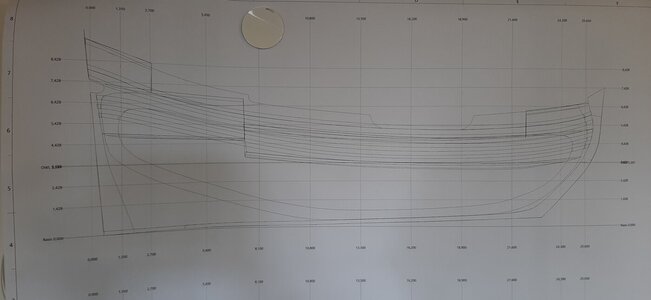
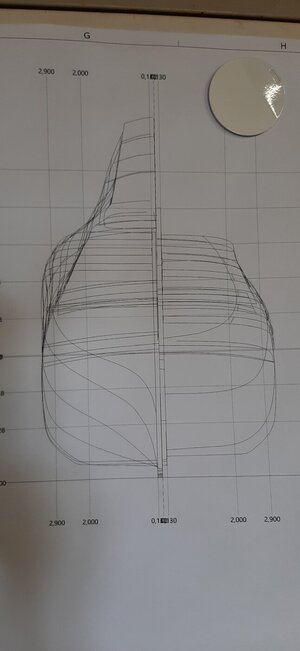
Selected some pear for keel stem and stern
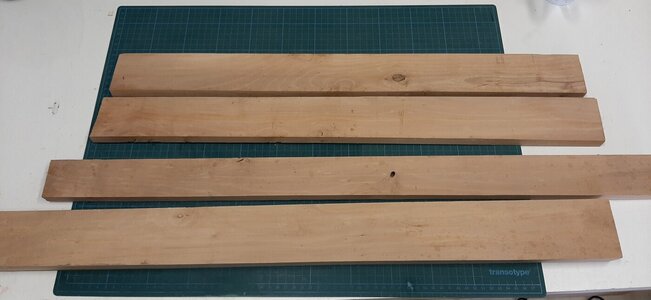
The band saw is used to saw the strip for the keel. The size of the keel will be 10,2 mm wide and 8,2 mm high.
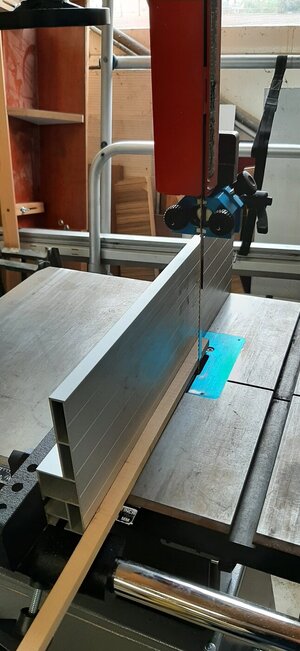
Followed by milling it to the correct size on the Proxxon thicknesser.
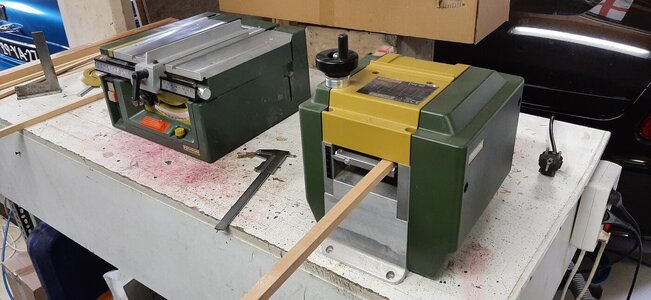
The wood for the keel is ready to start making the keel.
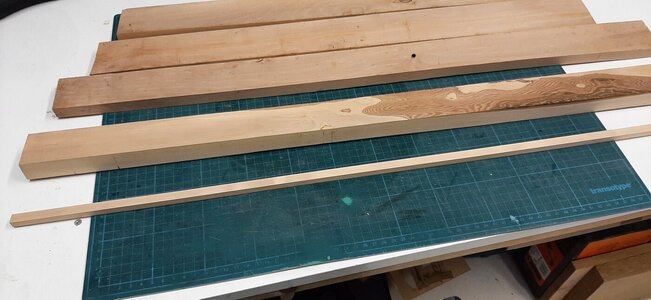
For the stern and stem I prepare a 6,8 mm billet which I roughly saw from a thicker billet on the band saw. The large band saw can saw even veneer slices.
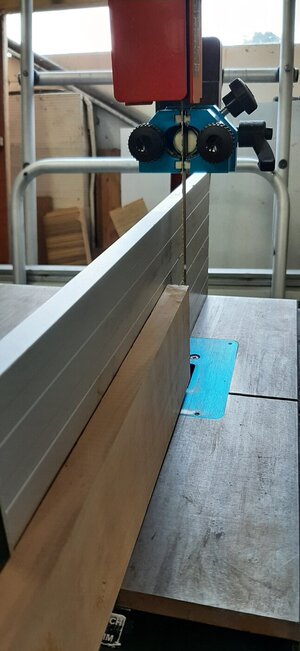
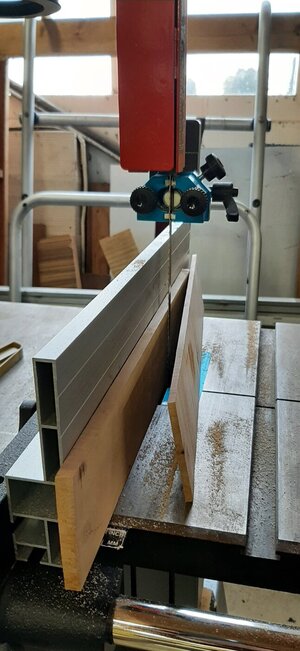
I have also prepared 2,3 mm billets which I will be using for planking floor and bilge planks.
Using billets like these enables you to saw the planks in the correct shape reducing stress on the hull.
All billets I have milled to correct thickness with the proxxon thicknesser.
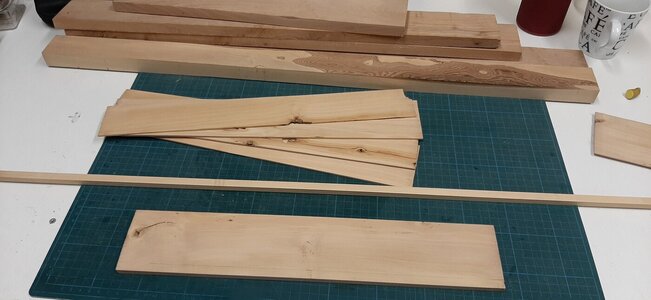
I have printed of my lines drawings I made in Delftship based on the archeological drawings and Witsen.


Selected some pear for keel stem and stern

The band saw is used to saw the strip for the keel. The size of the keel will be 10,2 mm wide and 8,2 mm high.

Followed by milling it to the correct size on the Proxxon thicknesser.

The wood for the keel is ready to start making the keel.

For the stern and stem I prepare a 6,8 mm billet which I roughly saw from a thicker billet on the band saw. The large band saw can saw even veneer slices.


I have also prepared 2,3 mm billets which I will be using for planking floor and bilge planks.
Using billets like these enables you to saw the planks in the correct shape reducing stress on the hull.
All billets I have milled to correct thickness with the proxxon thicknesser.

Last edited:
A lot of valuable preparation and finally dust 
 .
.
You have a great bandsaw. I use the proxxon, it works but has its limitations. I reduce the thicker pieces of wood with a circle saw and do the finer work with the proxxon.

 .
.You have a great bandsaw. I use the proxxon, it works but has its limitations. I reduce the thicker pieces of wood with a circle saw and do the finer work with the proxxon.
For this work the big bandsaw is really of added value, especially for the thinner slices for the planking.A lot of valuable preparation and finally dust
.
You have a great bandsaw. I use the proxxon, it works but has its limitations. I reduce the thicker pieces of wood with a circle saw and do the finer work with the proxxon.
- Joined
- Oct 23, 2018
- Messages
- 863
- Points
- 403

I hope to see you and your model during the exhibition in Amsterdam.
I will be there, hope to see you in September.I hope to see you and your model during the exhibition in Amsterdam.
Today I didn t had much time but could spend two hours on preparing stem and stern.
For these I used my waterlines drawing.
The thickness of the stem and stern is according Witsen 1 duim (amsterdam inch) per 1/10 foot of ships length. For my ship this is ((95/10) × (Amsterdam foot/11))/36 = 6,8 mm.
Comparing to the archological drawings this correct.
The width of stem and stern I determined by adding the thickness of the planking twice. Compared to the top view of the archeological drawings this was correct.
Based on this I have drawn the stem outlines.
I also drew the keel stem connection, in 17th century Dutch called the kinnebak.
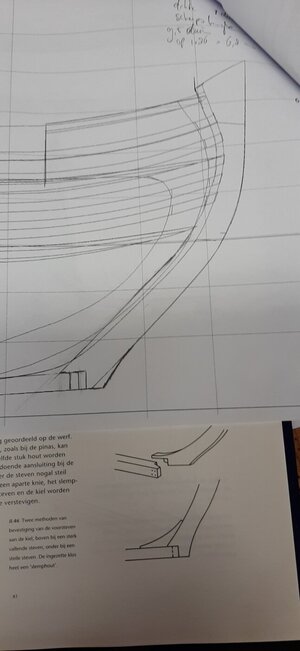
By spreading graphite powerder on the rear of the drawing I tranfered it to the 6,8 mm billet by tracing it with a pencil.
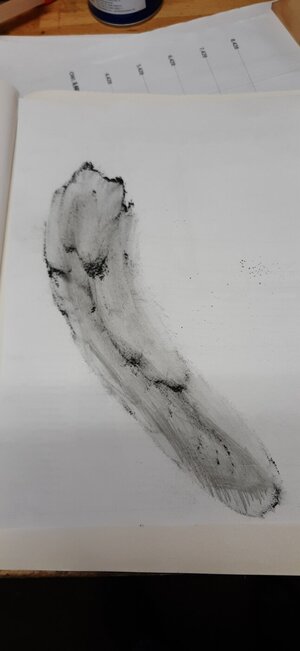
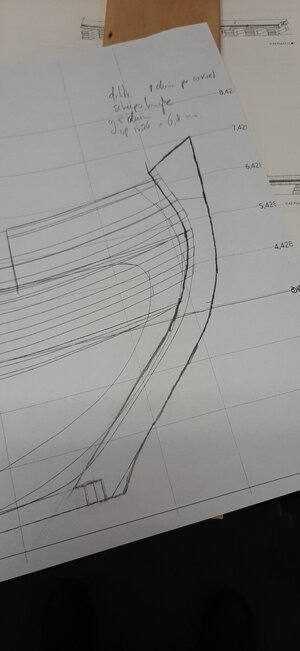
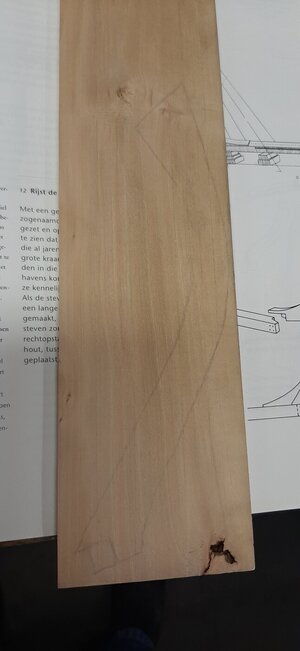
After cutting it on the small proxxon band saw I check it on the drawing.
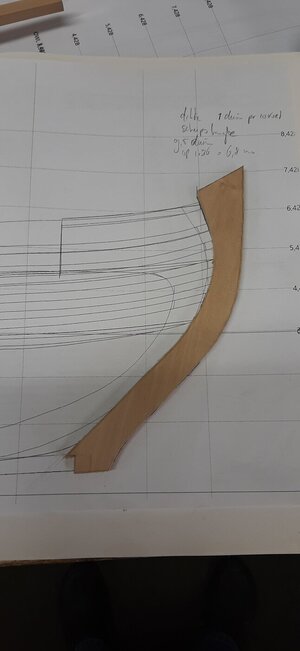
The stern post was drawn in the same way.
After cutting both with the small proxxon band saw I have the outlines of the hull.
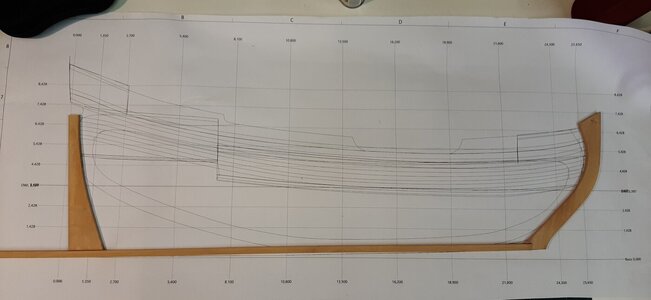
Next time I will double check if stem and stern post can be of one pieces. In principle for this size of ship it could be, but I will double check with the wreck data I have.
The keel I will split in two pieces with a joint before the main mast at +/-1/3 of the keel lenght
Next time preparing the keel and stem and stern joints.



